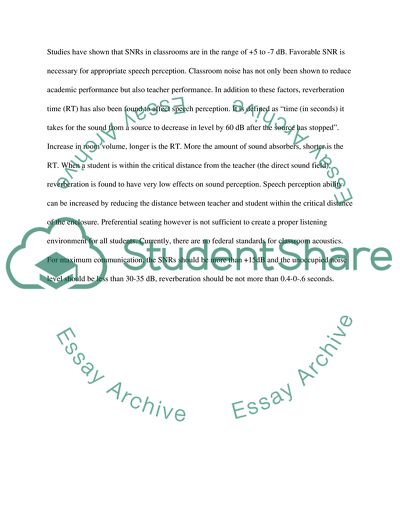Classroom Acoustics for Children with Normal Hearing and With Hearin Essay. https://studentshare.org/medical-science/1794854-classroom-acoustics-for-children-with-hearing-impairment
Classroom Acoustics for Children With Normal Hearing and With Hearin Essay. https://studentshare.org/medical-science/1794854-classroom-acoustics-for-children-with-hearing-impairment.


